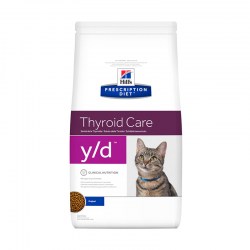

The median length of time since initial diagnosis of the cardiac disease was 17 mo (range, 2–111 mo). The majority of dogs included in the study were asymptomatic for the cardiac disease ( n = 43) but 22 dogs were symptomatic (i.e., had a prior episode of CHF). Most dogs ( n = 33) had a body condition score between 4 and 6 (on a scale of 1 to 9, where 1 is emaciated, 5 is ideal and 9 is obese, as recorded in the medical record). Body condition scores were available for 40 of 65 dogs.

Dogs with DCM (median 36.4 kg range, 13.7–83.2 kg) weighed significantly more than dogs with CVD (median 9.1 kg range, 2.4–44.1 kg P < 0.001). Median body weight was 10.8 kg (range, 2.4–83.2 kg). Twenty-three other breeds were represented. Other common breeds included Cocker Spaniels ( n = 5), mixed-breed dogs ( n = 5), Chihuahuas ( n = 3), Keeshonds ( n = 3), Yorkshire Terriers ( n = 3), Doberman Pinschers ( n = 3), Basset Hounds ( n = 3) and Cavalier King Charles Spaniels ( n = 3). The most common breed represented was the Poodle ( n = 10: Toy, n = 4 Miniature, n = 5 Standard, n = 1). The dogs were predominantly male ( n = 38 33 neutered) with 27 female dogs (26 neutered). Dogs with CVD (11.8 ± 2.4 y) were significantly older than dogs with DCM (8.2 ± 2.7 P < 0.001). Of the 65 dogs, 52 had CVD and 13 had DCM. Seventeen dogs had died, two owners declined to participate and one owner provided conflicting answers thus, 65 dogs with cardiac disease were included in the study. RESULTSĮighty-five owners of dogs with cardiac disease were contacted. A value of P < 0.05 was considered statistically significant.
#Sirds in dogs software
All statistical analysis was performed using a commercial statistical software package (Systat 9.01 SPSS, Chicago, IL). Continuous variables were compared using independent t-tests. All food intake over the last 24 h also was recorded.Ĭhi-square analysis was used to determine differences in categorical variables between dogs with DCM and CVD and also between symptomatic and asymptomatic dogs. Owners of these dogs were contacted by telephone and were given a standardized questionnaire that included questions on the dogs' concurrent diseases, medication use, anorexia and diet history. All dogs were identified from the cardiology database at the Foster Hospital for Small Animals.

To avoid new, unstable cases, the diagnosis had to be established by a board-certified veterinary cardiologist at least 1 mo before participation in the study. MATERIALS AND METHODSĭogs that had been diagnosed with either dilated cardiomyopathy (DCM) or chronic valvular disease (CVD) by echocardiography between 19 at the Tufts University Foster Hospital for Small Animals were included in the study. The purpose of this study was to determine the prevalence of anorexia and the dietary patterns of dogs with cardiac disease. Finally, knowledge of the extent of use of treats and nutritional supplements also would be important in designing nutritional studies and in dietary modification. In addition, dogs with cardiac disease are typically older and may have concurrent diseases that could also require dietary modifications. For example, dietary patterns may change when dogs are initially diagnosed with cardiac disease or may change with increasing severity of disease. Knowledge of the usual dietary patterns of dogs with cardiac disease is required to conduct these studies. To prove benefits of these and other forms of nutritional modulation, intervention studies are needed. These include sodium restriction, caloric supplementation and administration of nutritional supplements. The prevalence of anorexia in a more diverse population of dogs with cardiac disease has not been reported.Ī variety of nutritional modifications have been proposed to slow progression of cardiac disease and to improve quality of life. In addition, anorexia has been shown to be a contributing factor in the decision of euthanasia in 68% of dogs with CHF ( 1). Anorexia, for example, has been reported to occur in up to 84% of dogs with congestive heart failure (CHF) 4 ( 1). These can include anorexia cardiac cachexia altered sodium, chloride and potassium excretion and nutrient deficiencies ( 1– 5). Dogs with cardiac disease often have nutritional alterations that can either be preexisting or secondary to the disease or its treatment. Nutrition can play an important role in the management of patients with cardiac disease. Dog, heart disease, dilated cardiomyopathy, chronic valvular disease, sodium


 0 kommentar(er)
0 kommentar(er)
